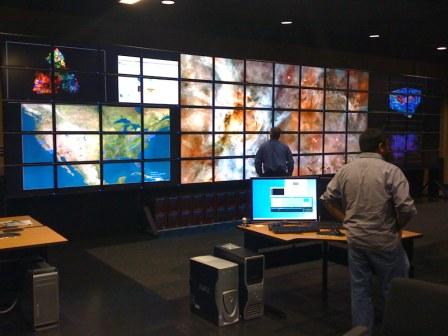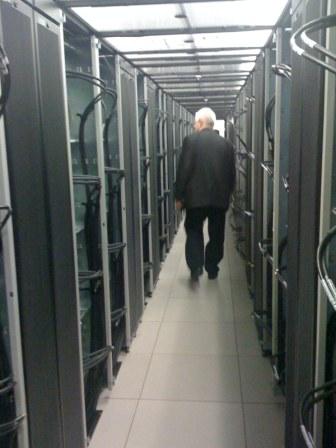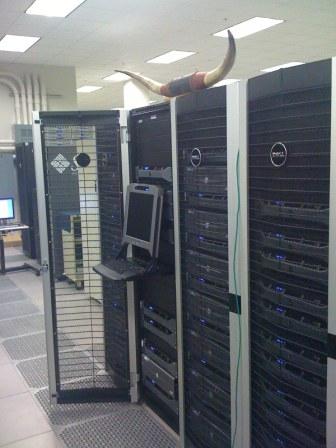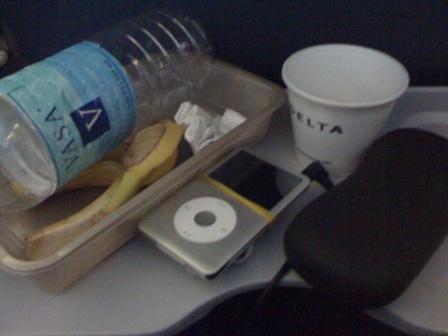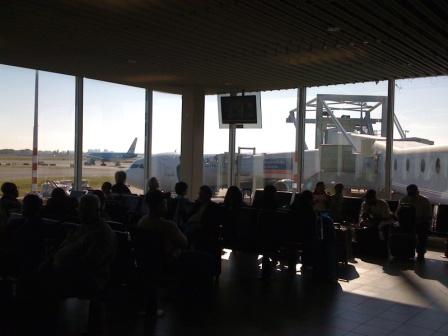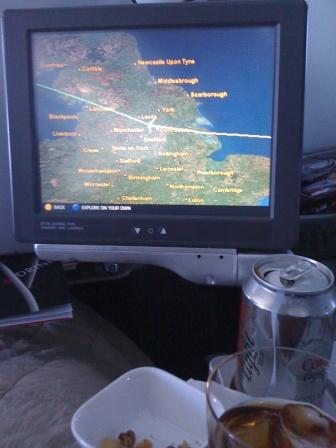Over the past couple of weeks there has been a flurry of IT industry activity around data footprint impact reduction with Dell buying Ocarina and IBM acquiring Storwize. For those who want the quick (compacted, reduced) synopsis of what Dell buying Ocarina as well as IBM acquiring Storwize means read this post here along with some of my comments here and here.
Now, before any Drs or Divas of Dedupe get concerned and feel the need to debate dedupes expanding role, success or applicability, relax, take a deep breath, then read on and take another breath before responding if so inclined.
The reason I mention this is that some may mistake this as a piece against or not in favor of dedupe as it talks about life beyond dedupe which could be mistaken as indicating dedupes diminished role which is not the case (read ahead and see figure 5 to see the bigger picture).
Likewise some might feel that since this piece talks about archiving for compliance and non regulatory situations along with compression, data management and other forms of data footprint reduction they may be compelled to defend dedupes honor and future role.
Again, relax, take a deep breath and read on, this is not about the death of dedupe.
Now for others, you might wonder why the dedupe tongue in check humor mentioned above (which is what it is) and the answer is quite simple. The industry in general is drunk on dedupe and in some cases thus having numbed its senses not to mention having blurred its vision of the even bigger opportunities for the business benefits of data footprint reduction beyond todays backup centric or vmware server virtualization dedupe discussions.
Likewise, it is time for the industry to wake (or sober) up and instead of trying to stuff everything under or into the narrowly focused dedupe bottle. Instead, realize that there is a broader umbrella called data footprint impact reduction which includes among other techniques, dedupe, archive, compression, data management, data deletion and thin provisioning across all types of data and applications. What this means is a broader opportunity or market than what exists or being discussed today leveraging different techniques, technologies and best practices.
Consequently this piece is about expanding the discussion to the larger opportunity for vendors or vars to extend their focus to the bigger world of overall data footprint impact reduction beyond where currently focused. Likewise, this is about IT customers realizing that there are more opportunities to address data and storage optimization across your entire organization using various techniques instead of just focusing on backup.
In other words, there is a very bright future for dedupe as well as other techniques and technologies that fall under the data footprint reduction umbrella including data stored online, offline, near line, primary, secondary, tertiary, virtual and in a public or private cloud..
Before going further however lets take a step back and look at some business along with IT issues, challenges and opportunities.
What is the business and IT issue or challenge?
Given that there is no such thing as a data or information recession shown in figure 1, IT organizations of all size are faced with the constant demand to store more data, including multiple copies of the same or similar data, for longer periods of time.
Figure 1: IT resource demand growth continues
The result is an expanding data footprint, increased IT expenses, both capital and operational, due to additional Infrastructure Resource Management (IRM) activities to sustain given levels of application Quality of Service (QoS) delivery shown in figure 2.
Some common IT costs associated with supporting an increased data footprint include among others:
- Data storage hardware and management software tools acquisition
- Associated networking or IO connectivity hardware, software and services
- Recurring maintenance and software renewal fees
- Facilities fees for floor space, power and cooling along with IT staffing
- Physical and logical security for data and IT resources
- Data protection for HA, BC or DR including backup, replication and archiving
Figure 2: IT Resources and cost balancing conflicts and opportunities
Figure 2 shows the result is that IT organizations of all size are faced with having to do more with what they have or with less including maximizing available resources. In addition, IT organizations often have to overcome common footprint constraints (available power, cooling, floor space, server, storage and networking resources, management, budgets, and IT staffing) while supporting business growth.
Figure 2 also shows that to support demand, more resources are needed (real or virtual) in a denser footprint, while maintaining or enhancing QoS plus lowering per unit resource cost. The trick is improving on available resources while maintaining QoS in a cost effective manner. By comparison, traditionally if costs are reduced, one of the other curves (amount of resources or QoS) are often negatively impacted and vice versa. Meanwhile in other situations the result can be moving problems around that later resurface elsewhere. Instead, find, identify, diagnose and prescribe the applicable treatment or form of data footprint reduction or other IT IRM technology, technique or best practices to cure the ailment.
What is driving the expanding data footprint?
Granted more data can be stored in the same or smaller physical footprint than in the past, thus requiring less power and cooling per Gbyte, Tbyte or PByte. Data growth rates necessary to sustain business activity, enhanced IT service delivery and enable new applications are placing continued demands to move, protect, preserve, store and serve data for longer periods of time.
The popularity of rich media and Internet based applications has resulted in explosive growth of unstructured file data requiring new and more scalable storage solutions. Unstructured data includes spreadsheets, Power Point, slide decks, Adobe PDF and word documents, web pages, video and audio JPEG, MP3 and MP4 files. This trend towards increasing data storage requirements does not appear to be slowing anytime soon for organizations of all sizes.
After all, there is no such thing as a data or information recession!
Changing data access lifecycles
Many strategies or marketing stories are built around the premise that shortly after data is created data is seldom, if ever accessed again. The traditional transactional model lends itself to what has become known as information lifecycle management (ILM) where data can and should be archived or moved to lower cost, lower performing, and high density storage or even deleted where possible.
Figure 3 shows as an example on the left side of the diagram the traditional transactional data lifecycle with data being created and then going dormant. The amount of dormant data will vary by the type and size of an organization along with application mix.
Figure 3: Changing access and data lifecycle patterns
However, unlike the transactional data lifecycle models where data can be removed after a period of time, Web 2.0 and related data needs to remain online and readily accessible. Unlike traditional data lifecycles where data goes dormant after a period of time, on the right side of figure 3, data is created and then accessed on an intermittent basis with variable frequency. The frequency between periods of inactivity could be hours, days, weeks or months and, in some cases, there may be sustained periods of activity.
A common example is a video or some other content that gets created and posted to a web site or social networking site such as Face book, Linked in, or You Tube among others. Once the content is discussed, while it may not change, additional comment and collaborative data can be wrapped around the data as additional viewers discover and comment on the content. Solution approaches for the new category and data lifecycle model include low cost, relative good performing high capacity storage such as clustered bulk storage as well as leveraging different forms of data footprint reduction techniques.
Given that a large (and growing) percentage of new data is unstructured, NAS based storage solutions including clustered, bulk, cloud and managed service offerings with file based access are gaining in popularity. To reduce cost along with support increased business demands (figure 2), a growing trend is to utilize clustered, scale out and bulk NAS file systems that support NFS, CIFS for concurrent large and small IOs as well as optionally pNFS for large parallel access of files. These solutions are also increasingly being deployed with either built in or add on accessorized data footprint reduction techniques including archive, policy management, dedupe and compression among others.
What is your data footprint impact?
Your data footprint impact is the total data storage needed to support your various business application and information needs. Your data footprint may be larger than how much actual data storage you have as seen in figure 4. In Figure 4, an example is an organization that has 20TBytes of storage space allocated and being used for databases, email, home directories, shared documents, engineering documents, financial and other data in different formats (structured and unstructured) not to mention varying access patterns.
Figure 4: Expanding data footprint due to data proliferation and copies being retained
Of the 20TBytes of data allocated and used, it is very likely that the consumed storage space is not 100 percent used. Database tables may be sparsely (empty or not fully) allocated and there is likely duplicate data in email and other shared documents or folders. Additionally, of the 20TBytes, 10TBytes are duplicated to three different areas on a regular basis for application testing, training and business analysis and reporting purposes.
The overall data footprint is the total amount of data including all copies plus the additional storage required for supporting that data such as extra disks for Redundant Array of Independent Disks (RAID) protection or remote mirroring.
In this overly simplified example, the data footprint and subsequent storage requirement are several times that of the 20TBytes of data. Consequently, the larger the data footprint the more data storage capacity and performance bandwidth needed, not to mention being managed, protected and housed (powered, cooled, situated in a rack or cabinet on a floor somewhere).
Data footprint reduction techniques
While data storage capacity has become less expensive on a relative basis, as data footprint continue to expand in order to support business requirements, more IT resources will be needed to be made available in a cost effective, yet QoS satisfying manner (again, refer back to figure 2). What this means is that more IT resources including server, storage and networking capacity, management tools along with associated software licensing and IT staff time will be required to protect, preserve and serve information.
By more effectively managing the data footprint across different applications and tiers of storage, it is possible to enhance application service delivery and responsiveness as well as facilitate more timely data protection to meet compliance and business objectives. To realize the full benefits of data footprint reduction, look beyond backup and offline data improvements to include online and active data using various techniques such as those in table 1 among others.
There are several methods (shown in table 1) that can be used to address data footprint proliferation without compromising data protection or negatively impacting application and business service levels. These approaches include archiving of structured (database), semi structured (email) and unstructured (general files and documents), data compression (real time and offline) and data deduplication.
| Archiving | Compression | Deduplication |
When to use | Structured (database), email and unstructured | Online (database, email, file sharing), backup or archive | Backup or archiving or recurring and similar data |
Characteristic | Software to identify and remove unused data from active storage devices | Reduce amount of data to be moved (transmitted) or stored on disk or tape. | Eliminate duplicate files or file content observed over a period of time to reduce data footprint |
Examples | Database, email, unstructured file solutions with archive storage | Host software, disk or tape, (network routers) and compression appliances or software as well as appearing in some primary storage system solutions | Backup and archive target devices and Virtual Tape Libraries (VTLs), specialized appliances |
Caveats | Time and knowledge to know what and when to archive and delete, data and application aware | Software based solutions require host CPU cycles impacting application performance | Works well in background mode for backup data to avoid performance impact during data ingestion |
Table 1: Data footprint reduction approaches and techniques
Archiving for compliance and general data retention
Data archiving is often perceived as a solution for compliance, however, archiving can be used for many other non compliance purposes. These include general data footprint reduction, to boost performance and enhance routine data maintenance and data protection. Archiving can be applied to structured databases data, semi structured email data and attachments and unstructured file data.
A key to deploying an archiving solution is having insight into what data exists along with applicable rules and policies to determine what can be archived, for how long, how many copies and how data ultimately may be finally retired or deleted. Archiving requires a combination of hardware, software and people to implement business rules.
A challenge with archiving is having the time and tools available to identify what data should be archived and what data can be securely destroyed when no longer needed. Further complicating archiving is that knowledge of the data value is also needed; this may well include legal issues as to who is responsible for making decisions on what data to keep or discard.
If a business can invest in the time and software tools, as well as identify which data to archive to support an effective archive strategy, the returns can be very positive towards reducing the data footprint without limiting the amount of information available for use.
Data compression (real time and offline)
Data compression is a commonly used technique for reducing the size of data being stored or transmitted to improve network performance or reduce the amount of storage capacity needed for storing data. If you have used a traditional or TCP/IP based telephone or cell phone, watched either a DVD or HDTV, listened to an MP3, transferred data over the internet or used email you have most likely relied on some form of compression technology that is transparent to you. Some forms of compression are time delayed, such as using PKZIP to zip files, while others are real time or on the fly based such as when using a network, cell phone or listening to an MP3.
Two different approaches to data compression that vary in time delay or impact on application performance along with the amount of compression and loss of data are loss less (no data loss) and lossy (some data loss for higher compression ratio). In addition to these approaches, there are also different implementations of including real time for no performance impact to applications and time delayed where there is a performance impact to applications.
In contrast to traditional ZIP or offline, time delayed compression approaches that require complete decompression of data prior to modification, online compression allows for reading from, or writing to, any location within a compressed file without full file decompression and resulting application or time delay. Real time appliance or target based compression capabilities are well suited for supporting online applications including databases, OLTP, email, home directories, web sites and video streaming among others without consuming host server CPU or memory resources or degrading storage system performance.
Note that with the increase of CPU server processing performance along with multiple cores, server based compression running in applications such as database, email, file systems or operating systems can be a viable option for some environments.
A scenario for using real time data compression is for time sensitive applications that require large amounts of data such as online databases, video and audio media servers, web and analytic tools. For example, databases such as Oracle support NFS3 Direct IO (DIO) and Concurrent IO (CIO) capabilities to enable random and direct addressing of data within an NFS based file. This differs from traditional NFS operations where a file would be sequential read or written.
Another example of using real time compression is to combine a NAS file server configured with 300GB or 600GB high performance 15.5K Fibre Channel or SAS HDDs in addition to flash based SSDs to boost the effective storage capacity of active data without introducing a performance bottleneck associated with using larger capacity HDDs. Of course, compression would vary with the type of solution being deployed and type of data being stored just as dedupe ratios will differ depending on algorithm along with if text or video or object based among other factors.
Deduplication (Dedupe)
Data deduplication (also known as single instance storage, commonalty factoring, data difference or normalization) is a data footprint reduction technique that eliminates the occurrence of the same data. Deduplication works by normalizing the data being backed up or stored by eliminating recurring or duplicate copies of files or data blocks depending on the implementation.
Some data deduplication solutions boast spectacular ratios for data reduction given specific scenarios, such as backup of repetitive and similar files, while providing little value over a broader range of applications.
This is in contrast with traditional data compression approaches that provide lower, yet more predictable and consistent data reduction ratios over more types of data and application, including online and primary storage scenarios. For example, in environments where there is little to no common or repetitive data files, data deduplication will have little to no impact while data compression generally will yield some amount of data footprint reduction across almost all types of data.
Some data deduplication solution providers have either already added, or have announced plans to add, compression techniques to compliment and increase the data footprint effectiveness of their solutions across a broader range of applications and storage scenarios, attesting to the value and importance of data compression to reduce data footprint.
When looking at deduplication solutions, determine if the solution is designed to scale in terms of performance, capacity and availability over a large amount of data along with how restoration of data will be impacted by scaling for growth. Other items to consider include how data is reduplicated, such as real time using inline or some form of time delayed post processing, and the ability to select the mode of operation.
For example, a dedupe solution may be able to process data at a specific ingest rate inline until a certain threshold is hit and then processing reverts to post processing so as to not cause a performance degradation to the application writing data to the deduplication solution. The downside of post processing is that more storage is needed as a buffer. It can, however, also enable solutions to scale without becoming a bottleneck during data ingestion.
However, there is life beyond dedupe which is to in no way diminish dedupe or its very strong and bright future, one that Im increasingly convinced of having talked with hundreds of IT professionals (e.g. the customers) is that only the surface is being scratched for dedupe, not to mention larger data footprint impact opportunity seen in figure 5.
Figure 5: Dedupe adoption and deployment waves over time
While dedupe is a popular technology from a discussion standpoint and has good deployment traction, it is far from reaching mass customer adoption or even broad coverage in environments where it is being used. StorageIO research shows broadest adoption of dedupe centered around backup in smaller or SMB environments (dedupe deployment wave one in figure 5) with some deployment in Remote Office Branch Office (ROBO) work groups as well as departmental environments.
StorageIO research also shows that complete adoption in many of those SMB, ROBO, work group or smaller environments has yet to reach 100 percent. This means that there remains a large population that has yet to deploy dedupe as well as further opportunities to increase the level of dedupe deployment by those already doing so.
There has also been some early adoption in larger core IT environments where dedupe coexists with complimenting existing data protection and preservation practices. Another current deployment scenario for dedupe has been for supporting core edge deployments in larger environments that provide support for backup and data protection of ROBO, work group and departmental systems.
Note that figure 5 simply shows the general types of environments in which dedupe is being adopted and not any sort of indicators as to the degree of deployment by a given customer or IT environment.
What to do about your expanding data footprint impact?
Develop an overall data foot reduction strategy that leverages different techniques and technologies addressing online primary, secondary and offline data. Assess and discover what data exists and how it is used in order to effectively manage storage needs.
Determine policies and rules for retention and deletion of data combining archiving, compression (online and offline) and dedupe in a comprehensive data footprint strategy. The benefit of a broader, more holistic, data footprint reduction strategy is the ability to address the overall environment, including all applications that generate and use data as well as IRM or overhead functions that compound and impact the data footprint.
Data footprint reduction: life beyond (and complimenting) dedupe
The good news is that the Drs. and Divas of dedupe marketing (the ones who also are good at the disco dedupe dance debates) have targeted backup as an initial market sweet (and success) spot shown in figure 5 given the high degree of duplicate data.
Figure 6: Leverage multiple data footprint reduction techniques and technologies
However that same good news is bad news in that there is now a stigma that dedupe is only for backup, similar to how archive was hijacked by the compliance marketing folks in the post Y2K era. There are several techniques that can be used individually to address specific data footprint reduction issues or in combination as seen in figure 7 to implement a more cohesive and effective data footprint reduction strategy.
Figure 7: How various data footprint reduction techniques are complimentary
What this means is that both archive, dedupe as well as other forms of data footprint reduction can and should be used beyond where they have been target marketed using the applicable tool for the task at hand. For example, a common industry rule of thumb is that on average, ten percent of data changes per day (your mileage and rate of change will certainly vary given applications, environment and other factors).
Now assuming that you have 100TB (feel free to subtract a zero or two, or add as many as needed) of data (note I did not say storage capacity or percent utilized), ten percent change would be 10TB that needs to be backed up, replicated and so forth. Now with basic 2 to 1 streaming tape compression (2.5 to 1 in upcoming LTO enhancements) would reduce the daily backup footprint from 10TB to 5TB.
Using dedupe with 10 to 1 would get that from 10TB down to 1TB or about the size of a large capacity disk drive. With 20 to 1 that cuts the daily backup down to 500GB and so forth. The net effect is that more daily backups can be stored in the same footprint which in turn helps expedite individual file recover by having more options to choose from off of the disk based cache, buffer or storage pool.
On the other hand, if your objective is to reduce and eliminate storage capacity, then the same amount of backups can be stored on less disk freeing up resources. Now take the savings times the number of days in your backup retention and you should see the numbers start to add up.
Now what about the other 90 percent of the data that may not have changed, or, that did change and exists on higher performance storage?
Can its footprint impact be reduced?
The answer should be perhaps or it depends as well as prompts the question of what tool would be best. There is a popular thinking as is often the case with industry buzzwords or technologies to use it everywhere. After all goes the thinking, if it is a good thing why not use and deploy more of it everywhere?
Keep in mind that dedupe trades time to perform thinking and apply intelligence to further reduce data in exchange for space capacity. Thus trading time for space capacity can have a negative impact on applications that need lower response time, higher performance where the focus is on rates vs ratios. For example, the other 90 to 100 percent of the data in the above example may have to be on a mix of high and medium performance storage to meet QoS or service level agreement (SLA) objectives. While it would fun or perhaps cool to try and achieve a high data reduction ratio on the entire 100TB of active data with dedupe (e.g. trying to achieve primary dedupe), the performance impacts could have a negative impact.
The option is to apply a mix of different data footprint reduction techniques across the entire 100TB. That is, use dedupe where applicable and higher reduction ratios can be achieved while balancing performance, compression used for streaming data to tape for retention or archive as well as in databases or other applications software not to mention in networks. Likewise, use real time compression or what some refer to as primary dedupe for online active changing data along with online static read only data.
Deploy a comprehensive data footprint reduction strategy combining various techniques and technologies to address point solution needs as well as the overall environment, including online, near line for backup, and offline for archive data.
Lets not forget about archiving, thin provisioning, space saving snapshots, commonsense data management among other techniques across the entire environment. In other words, if your focus is just on dedupe for backup to
achieve an optimized and efficient storage environment, you are also missing
out on a larger opportunity. However, this also means having multiple tools or
technologies in your IT IRM toolbox as well as understanding what to use when, where and why.
Data transfer rates is a key metric for performance (time) optimization such as meeting backup or restore or other data protection windows. Data reduction ratios is a key metric for capacity (space) optimization where the focus is on storing as much data in a given footprint
Some additional take away points:
- Develop a data footprint reduction strategy for online and offline data
- Energy avoidance can be accomplished by powering down storage
- Energy efficiency can be accomplished by using tiered storage to meet different needs
- Measure and compare storage based on idle and active workload conditions
- Storage efficiency metrics include IOPS or bandwidth per watt for active data
- Storage capacity per watt per footprint and cost is a measure for in active data
- Small percentage reductions on a large scale have big benefits
- Align the applicable form of virtualization for the given task at hand
Some links for additional reading on the above and related topics
- Data footprint reduction (Part 2): Dell, IBM, Ocarina and Storwize
- Chapter 8 and 10: The Green and Virtual Data Center (CRC)
- Business Benefits of Data Footprint Impact Reduction
- Long-Term Data Protection and Retention – Finding the Correct Balance
- Application Transparency and Co-existence with Real-Time Data Compression
- Enabling a Green and Energy Efficient Storage with Real-time Compression
- Real-time Data Compression Integrity and Reliability
- Real-Time Data Compression Performance Considerations
- Real-time Data Compression for On-line Active Data
- Application Agnostic Real-time Data Compression
- Saving Money with Green IT: Time To Invest In Information Factories
- Storage Efficiency and Optimization – The Other Green
- Shifting from energy avoidance to energy efficiency
- Industry Trends and Perspectives: Tape, Disk and Dedupe Coexistence
- The Many Flavors of Deduplication
- Experts Share De-Dupe Insights
- Business Benefits of Policy Based Data De-Duplication
- Comments on IBM buying Storwize primary compression
- Comments on Dell buying Ocarina and primary
Wrap up (for now, read part II here)
For some applications reduction ratios are an important focus on the tools or modes of operations that achieve those results.
Likewise for other applications where the focus is on performance with some data reduction benefit, tools are optimized for performance first and reduction secondary.
Thus I expect messaging from some vendors to adjust (expand) to those capabilities that they have in their toolboxes (product portfolios) offerings
Consequently, IMHO some of the backup centric dedupe solutions may find themselves in niche roles in the future unless they can diversity. Vendors with multiple data footprint reduction tools will also do better than those with only a single function or focused tool.
However for those who only have a single or perhaps a couple of tools, well, guess what the approach and messaging will be.
After all, if all you have is a hammer everything looks like a nail, if all you have is a screw driver, well, you get the picture.
On the other hand, if you are still not clear on what all this means, send me a note, give a call, post a comment or a tweet and will be happy to discuss with you.
Ok, nuff said.
Cheers gs
Greg Schulz – Author Cloud and Virtual Data Storage Networking (CRC Press), The Green and Virtual Data Center (CRC Press) and Resilient Storage Networks (Elsevier)
twitter @storageio
All Comments, (C) and (TM) belong to their owners/posters, Other content (C) Copyright 2006-2024 Server StorageIO and UnlimitedIO LLC All Rights Reserved





















